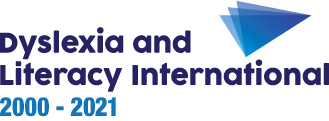Pages in Section 1
The material about the brain and diagrams which are the basis for the animations were drawn from Dr Duncan Milne’s book, Teaching the brain to read (2005, SK Publishing).
In writing this section we have also consulted:
- Cramer, Sh. C. and Ellis, W. (1996). Learning Disabilities – Lifelong Issues. Baltimore, USA: Paul H. Brookes.
- Dehaene, S. (2007). Les neurones de la lecture. Paris, France: Odile Jacob.
- Morais, J. (1994) L’art de lire. Paris, France: Odile Jacob.
- National Institute of Child Health and Human Development. (2000). Report of the National Reading Panel. Teaching children to read: an evidence-based assessment of the scientific research literature on reading and its implications for reading instruction: Reports of the subgroups (NIH Publication No. 00-4754). Washington, USA: U.S. Government Printing Office.
- Sprenger-Charolles, L., & Serniclaes, W. (In revision). The phonological hypothesis of dyslexia and a ‘plausible’ explanation. Reading and Writing: An Interdisciplinary Journal (Special issue: ‘From Letter to Sound’).
- Serniclaes, W., Van Heghe, S., Mousty, Ph., Carré, R., & Sprenger-Charolles, L. (2004). Allophonic mode of speech perception in dyslexia. Journal of Experimental Child Psychology, 87, 336-361.
- Professor John Stein’s public lectures
- Professor Dirk Bakker’s contribution in the Guide to the BBC film Language Shock
The quotation from Dr Harry Chasty is from a speech at the conference ‘Action for dyslexia’ held at the European Parliament in 1994.
We quoted from Usha Goswami and Peter Bryant (1990), Phonological skills and learning to read. Hillsdale, USA: Erlbaum.
The sonogram is from ‘Ben Laden et le mythe de l’empreinte vocale’ (Ben Laden and the myth of the sound-print), Revue Vivant n°1, by Louis-Jean Boë, Institut de la Communication Parlée, INPG-Université Stendhal, CNRS, Grenoble, France.
The short video clips are from the BBC film Language Shock – Dyslexia across cultures, available free on our web site.


